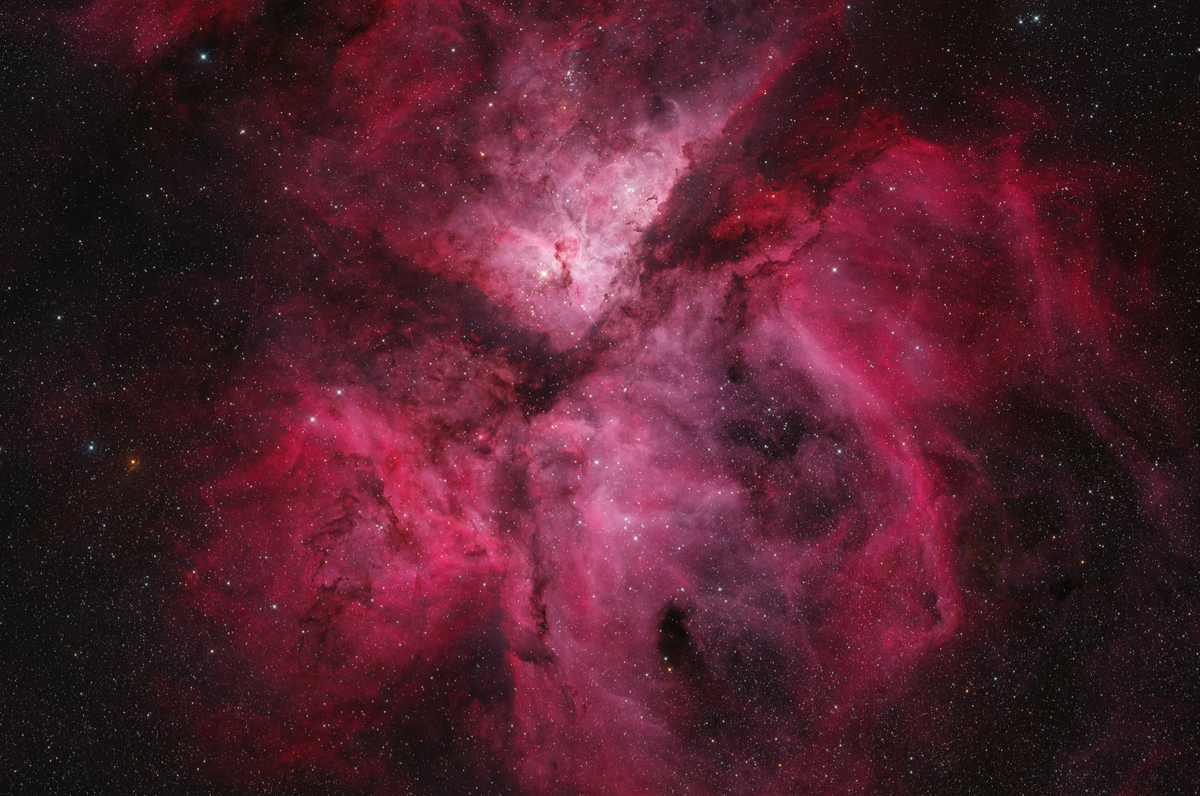
[back] Rhea First Light image of NGC 3372 (Eta Carinae Nebula) in Carina

|
(c) 2025 All astro photo images are copyrighted. They may not be used or reproduced without explicit written permission from the authors. |
|
300" |
|
About this Image / Über dieses Bild
| Camera: | Moravian C3-PRO-61000 Mono CMOS |
| Image Type, Orientation: | RGB-Ha Color Composite, North is at 12:00 |
| Exposure time: | RGB: 6/6/6 x 180s and 240/240/240 x 0.25s, Ha: 10 x 300s (1:47h total) |
| Exposure date: | April 27th, 2023.. May 3rd, 2024 |
| Location: | Capella Observatory South at Kiripotib Astro Farm, Namibia |
| Filter: | Astronomik Deep-Sky Deep-Sky RGB Filter plus 6nm Ha filter on Moravian EFW-3L-9-II External Filter Wheel |
| Instrument: | "Rhea", a PlaneWave DeltaRho 350, 1050mm focal length, 350mm aperture, f/3 on 10Micron GM2000 HPS II Combi |
| Photographer: | Josef Pöpsel, Rainer Raupach, Frank Sackenheim, Stefan Binnewies |
| Remarks: |
The Eta Carinae Nebula is one of the most frequently imaged objects in the
southern sky. This image marks the “technical first light" following the installation and alignment of the newly deployed PlaneWave DeltaRho 350 astrograph in April 2025. With a total exposure time of just 1 hour and 47 minutes, the image already demonstrates the remarkable speed and capability of this f/3.0 optical system. In addition to standard exposures, the region surrounding the proper "star"—the massive, energetic star Eta Carinae—was captured separately using lucky imaging techniques. This approach minimizes the effects of atmospheric turbulence and brings the image closer to the resolution limit of the optics. The detailed view includes data from this technique and reveals, to some extent, the Homunculus Nebula surrounding the central star. This bipolar structure spans only about ±9 arcseconds in length—corresponding to a radius of just 12 pixels in the full-resolution image. The Homunculus Nebula consists of material ejected during Eta Carinae’s Great Eruption in the 1840s and continues to expand at high velocity. The 14-inch aperture of the system is sufficient to clearly separate the nebula from the star itself, but capturing more intricate structural details requires a larger aperture and superior seeing conditions—such as those achieved in high-resolution observations of Ganymed in 2004 (see bottom of this page). |
|
|
|
| Bemerkungen: |
Der Eta-Carinae-Nebel ist ein
sehr häufig fotografiertes Objekt am Südhimmel. Diese Aufnahme stellt das
technische First Light nach Installation und Justage des im April 2025 neu
installieren PlaneWave DeltaRho 350 Astrographen dar. Die Belichtungszeit
beträgt gerade einmal 1:47h und zeigt die Leistungsfähigkeit dieser Optik
mit f/3.0 im Hinblick auf Schnelligkeit. |
Back to the Diffuse Nebulae Overview / Zurück zur Diffuse-Nebel-Übersichtsseite